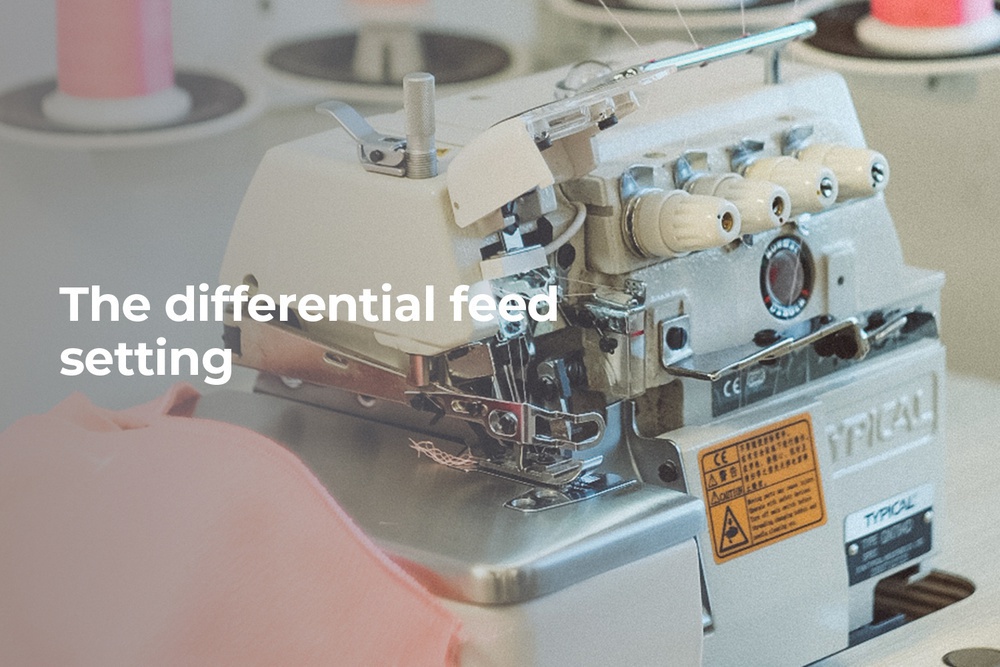Have you ever had to deal with gathered or stretched-out edges when finishing them on the overlocker? If yes, the differential feed setting is the solution to the problem. Save the examples and try the settings yourself.
The overlocker has two sets of feed dogs that move independently one from another. By adjusting the differential feed knob, you are in fact adjusting the rate at which the front feed dog moves. This eliminates the unnecessary gathering and waviness of the fabric. The available settings for the differential feed vary between 0.6 (stretching) and 2 (gathering).
Setting 1 (N) is the neutral position, which creates no effects on the fabric.
Setting 2 — gathering. The front feed dogs move faster than the rear feed dogs, gathering the fabric as it is sewn preventing the wave effect. This setting is used for finishing the edges on bi-stretch fabrics.
Setting 0.6–0.8 — stretching. The front feed dogs move slower than the rear feed dogs, stretching the fabric as it is sewn preventing any unwanted gathering.
You may achieve the perfect finish for your fabric by adjusting the differential feed setting on the overlocker.
Find more sewing hacks from Vikisews here:
How to figure out how much fabric you’re going to need
How to transfer pattern markings onto fabric










Здесь пока нет комментариев